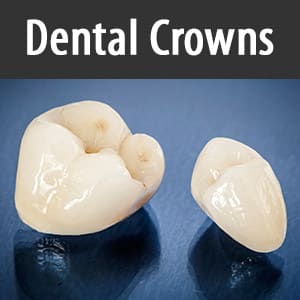
Therefore, knowing your options can help you make a more informed choice with your dentist regarding the best crown for your needs. Here, then, is a quick primer on the main types of dental crowns used today.
Metal crowns. Early in the last century, crowns made of gold, silver or other metals were the go-to dental restoration. Because of their strength and durability, metal crowns are still used today, mainly in back teeth that encounter heavy biting forces. Their drawback: They’re decidedly not the color of natural teeth and so can stand out if they’re placed in the visible “smile zone.”
PFM crowns. The first crowns made with dental porcelain solved the appearance problem, but couldn’t adequately handle biting forces as well as metal. Out of this came the porcelain fused to metal (PFM) crown, which contains an inner core of metal overlaid with tooth-colored porcelain. Providing both strength and life-likeness, PFM crowns were immensely popular until the mid-2000s.
All-Ceramic crowns. The development of porcelains more durable than earlier versions eventually dethroned the PFM (although the latter is still used today). Sixty percent of the crowns installed in recent years are all-ceramic, many reinforced with a strength material known as Lucite. Many all-ceramic crowns reaching the 15-year mark are still in place and functioning.
All of these crowns continue to be viable options for dental patients. The biggest factor in choosing one particular crown over another is the type of tooth involved and its location. As mentioned before, metal or PFM crowns are usually better for back teeth where durability is a higher priority than aesthetics. All-ceramics work well in high-visibility front teeth that normally encounter lighter biting forces than back teeth.
Regardless of which kind eventually caps your tooth, any of today’s modern crowns will function as intended. But the best crown for you will be the one that both protects your tooth and enhances your smile.
If you would like more information on dental crown restorations, please contact us or schedule an appointment for a consultation. You can also learn more about this topic by reading the Dear Doctor magazine article “Porcelain Dental Crowns.”
